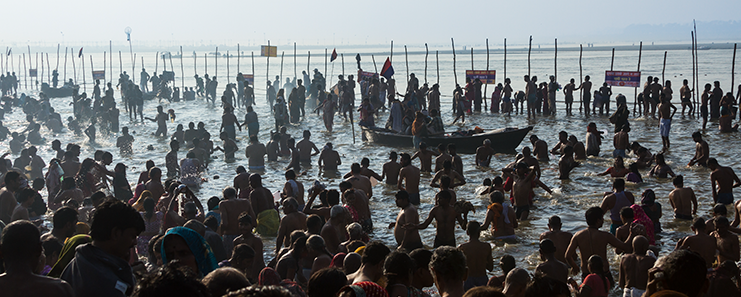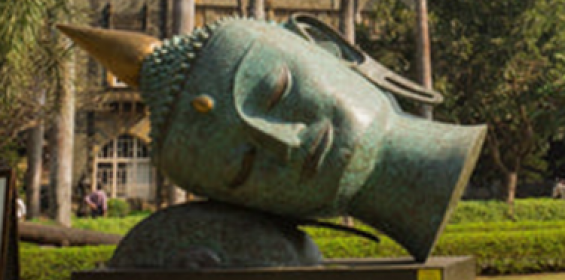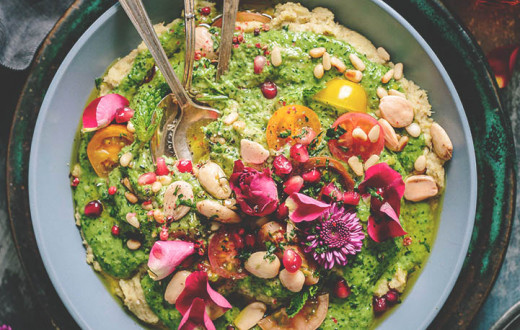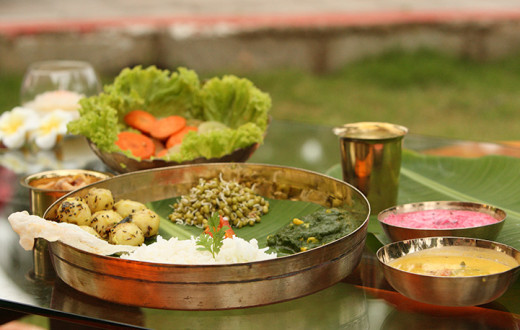Faith sweeps all in its wake. There is a strength in knowing a Higher power is living within your life’s realm. How then would a fleeting tryst with that higher power be? This spiritual tryst, a penultimate religious experience is what devout Kumbh seekers aspire for. Their belief is simple: a dip in the Holy Trinity of waters at the time of Kumbh will grant freedom from all sins, and the promise of the soul’s liberation. A window to another realm, a promise that is deep, sacred, and powerful enough to change a soul’s destiny.

A walk through millennia
For a believer, a pilgrimage signifies a different travel - a sense of purpose, unburdening the soul, paying off one’s karmic debts. The hardships don’t matter, possibly don’t seem like hardships at all. This is the sentiment as thousands of people join the Kumbh Mela, every 6 or 12 years. There is a longing sense of anticipation as one joins the ranks of saints, householders, business people, or children as they line up for a dip in the waters which are believed to become celestial during the Kumbh period. A sense of wanting to enter a realm between humanity and divinity that opens only during the Kumbh - a realm that promises eternity.
Tulsidas, the celebrated 16th-century Indian poet, said: “Beautiful is the meeting of the white (Ganga) and the dark Yamuna. Such that Tulsi’s heart leaps with joy at the sight of the waves transcending energies for the soul.”
If one is to walk into the millennia-old history of the Kumbh, we would need to look up the Rig Veda (verse 10.89.7), and references in the Athrava Veda and Yajur Veda. One will encounter legends like the Great Cosmic Dissolution, meet Lord Ram and legendary philosopher like Adi Shankaracharya. As always, it starts with a story.

The story of creation…& beyond
In the legend of the Samudra Manthan (the churning of the ocean), the devas and the asuras churned the ocean with a snake, Vasuki. A pot of nectar (amrit) came out of the ocean, bringing along with it all the good and bad.
A fight soon ensued. For twelve days and nights (equivalent to twelve human years), the mighty skies bore witness to the gods and demons fighting for the pot of amrit . It is believed during the battle, the celestial bird Garuda, the vehicle of Vishnu, flew away with the Kumbha. Drops of amrit fell in four places on earth: Prayag, Haridwar, Ujjain, and Nashik. The Kumbh Mela is celebrated in these places.
Puranic legends of the Kumbh talk of a pitcher with amrit (nectar), whose contents spilled and created the universe. This legend is an allegorical representation of the process of creation.
The Vedic texts describe the process of creation as a tug of war between two forces - an expanding force called Indra and a resistant force called Vrtra in the Hiranyagrabha, a golden-hued womb.
Indra overcomes Vrtra, causing the Hiranyagrabha to explode as Brahmanda Visphotak, or the Big Bang.
The Maha Kumbh or Purna Kumbh is celebrated once every 12 years at the Sangam in Allahabad, India, at the convergence of the Ganges, Yamuna, and the mythical Saraswati rivers. Shares Gurudev Sri Sri Ravi Shankar: “The Ganga is a symbol of knowledge and self-inquiry. It is on the banks of the Yamuna that events of love have been immortalized. When knowledge and love come together, when the head meets the heart, Saraswati, symbolic of wisdom and the fine arts emerge.”
The Chinese traveler Huan Tsang shared accounts of the Kumbh Mela in Prayag which fell in the kingdom of Emperor Harshavardhana around 640 CE. The Harshacharita of Bana (a court poet in the kingdom of Harshavardhana) also cites references to the Kumbh.
Interestingly, Adi Shankaracharya gave the present day format of the Kumbh!
A congregation of conversation, creation & the 5 elements
Ancient Indians encapsulated great significance behind certain festivities and practices. The celebrations were a means to remind people of divinity, the origin and end of life, and encourage a scientific temper. The Kumbh, too, is a gateway to understanding the concept of creation.
Dr. D.K. Hari and Dr. Hema Hari, founders of Bharath Gyan say: “The Kumbh festival was instituted by the ancients as a congregation to discuss creation amidst other scientific and spiritual concepts along with issues faced by the society of that generation.”
The snanas (baths in the Holy water) are the most important aspect of the Kumbh. Snana in Sanskrit means washing, purification, immersion. Indian scriptures refer to pancha snana (five kinds of purifications). According to the Upanishads, each type of snana is connected to each of the five layers or sheaths of human life called the Panchakosha.
1. Jala snana: The first type of bathing is done with water and is connected to the physical body (Annamaya kosha) made up of the five elements, the panchabhuta. Jala snana cleanses our body.
2. Prana snana: Prana is life energy. Prana snana involves replenishing and invigorating our prana, the Pranamaya kosha, through pranayama.
3. Mantra snana: In a Kumbh, mantra snana involves japa or repetition of a mantra, or the chanting of a few select mantras. Mantra snana purifies and gives focus to the mind.
‘An ancient version of a spiritual expo’
“When a tiny atom explodes, the radiation lasts for a long time, the mind is even more subtle than one-millionth of an atom. When the mind explodes, that is Enlightenment.
Over the centuries, thousands of sages who have meditated, done penance and been enlightened come to the Kumbh Mela and relieve themselves of the burden of the merits gained through sadhana by bathing in the rivers.
Water has the quality to absorb the energy they radiate. The seekers, who come from all corners to be in the company of the seers and saints, gain that merit when they take a dip in the rivers.”
- Gurudev Sri Sri Ravi Shankar
4. Nada snana - Nada refers to the primordial sound, Om. At the time of the Brahmanda Visphotak, the Big Bang of the universe, the sound created by this Big Bang has been described by the ancient Indian seers as Om, which has been since reverberating through the universe.
Focussing one’s attention on Nada gives freshness to our intellect, vignana. This snana is connected to the Vignanamaya kosha.
5. Dhyana snana - This refers to cleansing through the practice of meditation. Dhyana snana involves immersing in the True Self, the atma, which leads to ananda, bliss. Thus connecting to the Anandamaya kosha.
The celestial dip
The energy and sight of thousands of people waiting to take a dip in ‘celestial’ waters can be sweeping and invigorating. The early morning fog that clutches the river’s shores, the cold chill, the crowds - it’s almost like one is slowly losing body consciousness and slipping into another, ethereal space. The crowd moves like one, an unspoken harmony born out of the pursuit of a sacred, shared goal. A psychological bonding of such a large gathering, collective effervescence as coined by 19th-century French sociologist, Émile Durkheim is dramatic in its affirmation to humanness and sparkling in spirit.
Today, the Kumbh Mela has transformed in its promise - perhaps more than the ancients had planned. The largest religious gathering in the world, so large that it can be viewed from outer space, and has also made it to Unesco’s list of ‘Intangible Cultural Heritage of Humanity’. Besides the seekers, the Kumbh Mela is increasingly attracting different kinds of people - enthusiastic tourists, photographers, documentary makers, millennials who want to experience the Kumbh cultural flavor. The reason could be many, yet the experience of a believer is soul-transforming. Faith does, indeed, move mountains.
Based on inputs by @bharathgyan. This research team led by a passionate husband-wife duo unearth some of India’s untold stories and make them contemporary. Some excerpts from their publications have been used. You can click here to buy any of their books on Indian civilization.




































